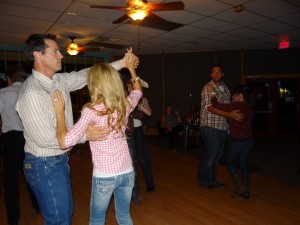 The Many Styles of Waltz
The Many Styles of Waltz
Ahhhh, the Waltz. A beautiful, elegant dance that reveals a couple floating around the floor with ease. The Waltz is a staple in American Ballroom dancing, but did you know when or how it originated? Here are some fun facts about the history of the Waltz.
There are several references to the Waltz being performed as early as the 16th century. It was well known for and characterized by the man holding the lady with his hand on her waist in a mostly closed position. This close embrace was scandalous at the time and it
was met with outrage in later centuries when it reached a higher status.
In the early 18thcentury, upper class individuals were dancing more conservative, traditional dances while their servants and peasants were enjoying the Waltz’s quicker pace and novel moves. Some of the bored attendees of the upper class gatherings actually snuck away to the balls of their servants to liven things up! A little later, in the 1780s, the Waltz was popularized and shocking to many in Vienna. It continued to spread in the years following, and during the Regency period (1811-1820) it became trendy in Britain. It was endorsed by a Russian ambassador’s wife and became more respectable with its increasing recognition. In this same era, the dance was permitted in London’s most exclusive club, Almack’s, despite the “indecent” and “outrageous” reputation it held. The world of dance is an ever-changing thing, and the Waltz became the basis of creation for many other ballroom dances. In the late 19th century, the tempo of the Waltzes being written were slowed down and different steps and turns were incorporated, using more backward and forward movement than the original Viennese Waltz. New styles of the Waltz developed, incorporating different types of music and the stylizing and culture of individual dancers.
Now, the waltz has a mind-boggling amount of versions. Here are just a few:
- The Viennese Waltz – fast versions of the Waltz
- The Irish Waltz – a distinctive Irish playing style originated at the gatherings of the Gaelic
- International Standard Waltz – Closed Position only; the couple’s embrace never breaks
- American Style Waltz – punctuated with impressive open movements, breaking the embrace
- The Scandinavian Waltz – fast or slow, the dancers are always rotating
- The Peruvian Waltz – an adaptation of the European Waltz, it has a specific title: vals criollo
- The Mexican Waltz – same basic rhythmic pattern as the Standard, but with strong Spanish influence in its music: vals mexicano
- The Cajun Waltz: hips are swayed and a closed position is maintained while dancing progressively around the floor
- The Contra Waltz – kind of a free for all, dancers progress around the floor with a waltz step, incorporating moves from other dances
Today both the faster Viennese Waltz, and the slower American and International style Waltzes are extremely popular with dancers of all ages.
Now that we’ve sparked your interest, come learn the Waltz for yourself! Here at Dance FX Studios in Mesa, AZ you can learn to Waltz, along with many other dances like Salsa, Cha Cha, Tango, even Country Swing! Try us out with our private ballroom dance introductory lesson for just $25 and see how much fun it is to learn to dance.
